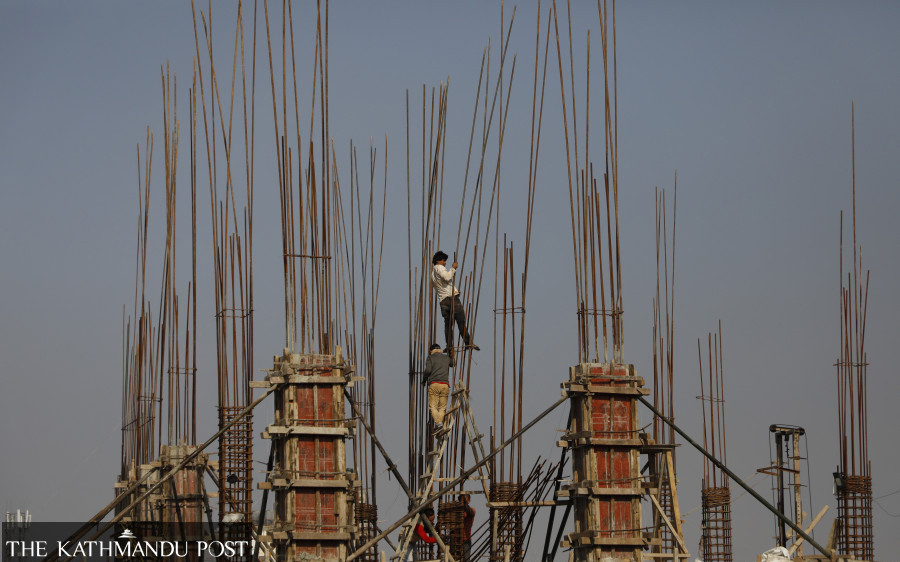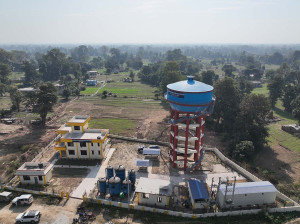Money
Nepal Rastra Bank report recommends providing more resources to real sectors
At the same time, there should be very close micro and macro monitoring systems, the report says.
Post Report
Although Nepal sank into financial turmoil due to a sharp fall in foreign reserves and liquidity crisis caused by policy measures taken to control the shocks of Covid-19, progressive approaches by the monetary authorities to provide more resources to potentially productive and efficient sectors should be continued with very close micro and macro monitoring systems, a Nepal Rastra Bank report said.
According to the report entitled "Private Sector Credit Growth and Its Impact Upon Real Sectors in Nepalese Economy" published by the central bank, monetary authorities should provide more resources to real sectors considering the empirical evidence that private credit to corporate sectors significantly contributed to economic growth.
“Investing in industries comes with risk and late return on investment, so banks are least interested in lending to the industrial sector,” said Rajesh Kumar Agrawal, chairperson of the Industry Committee at the Federation of Nepalese Chambers of Commerce and Industry.
"This trend has existed from the start," he said. "Banks have been lending especially to trade and even to land where the risk is low and return is also quick," Agrawal said.
"The central bank should fix a certain percentage which banks should lend to the industrial sector, then only can investments increase," Agrawal said.
“The current turmoil in foreign reserves and possible liquidity crisis are strong evidence that there is huge room for improvement in financial monitoring in terms of micro and macro prudential policies in Nepal,” the report said.
"It is considered to be almost true that the majority of emergency aid via expansionary monetary policies after the pandemic had been siphoned to imports of consumer goods including luxury goods and housing investments," the report added.
“There is a need for active policy efforts to boost private sector credit in Nepal for more dynamic industrialisation, and economic development should go in parallel with very close financial micro and macro monitoring systems,” the report said.
According to the report, the exact path for an optimal policy mix between active private credit policies for dynamic growth and financial regulatory policies to minimise financial instability is more likely to be found when Nepali monetary authorities gain more long-term perspectives in an economic and political context.
Although it has been found that private sector credit growth in Nepal has had relatively limited impacts on economic growth in real sectors, the role of efficient private sector credit growth cannot be overemphasised considering the very early stage of industrialisation and economic development of Nepal, the report said.
The report recommended that private sector credit policies should go together with industrial development policies to maximise the effectiveness of private sector credit growth as an engine of economic growth.
“From the very early stage of the loan making process, strict micro prudential policy efforts should be complemented to prevent the possible waste of private sector credit in addition to macro prudential policy efforts to minimise possible financial instability,” said the report.
To build an optimal policy mix mechanism, further efforts to establish a reliable micro financial data collection system should be made, the report suggested.
The growth rate of private sector credit in Nepal is quite high in comparison to some of the neighbouring countries.
The report said that in the last six years, the average growth rate year-on-year of private sector credit in Nepal is around 21 percent, the credit growth of India is 9 percent and that of Bangladesh and Pakistan is 13 percent.
The credit growth rate was higher in Nepal than in the neighbouring countries almost all the time, even during the Covid-19 pandemic, according to the report. Also, the growth rate of private sector credit is highly volatile in Nepal and Pakistan, while it is more or less volatile in India and Bangladesh.
“The steady increase in credit growth in Nepal, immediately after the Covid-19 pandemic, seems to be unnatural compared to the neighbouring countries,” the report said.
The wholesaler and retailer sector has the highest share of credit with 20.1 percent. Consumable credit comes second with 18.4 percent followed by production sector credit with 14.8 percent.
The share of credit to the wholesaler and retailer sector has been increasing over the years, and the share of production sector credit has been decreasing significantly in the last decade, the report said.




 16.12°C Kathmandu
16.12°C Kathmandu












